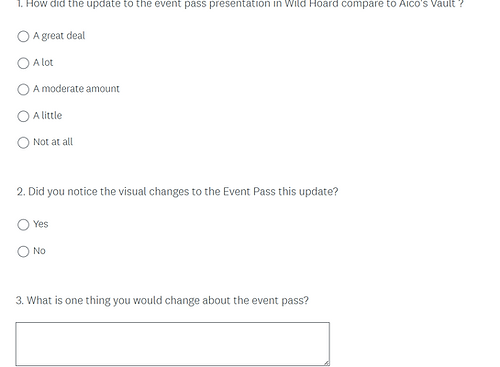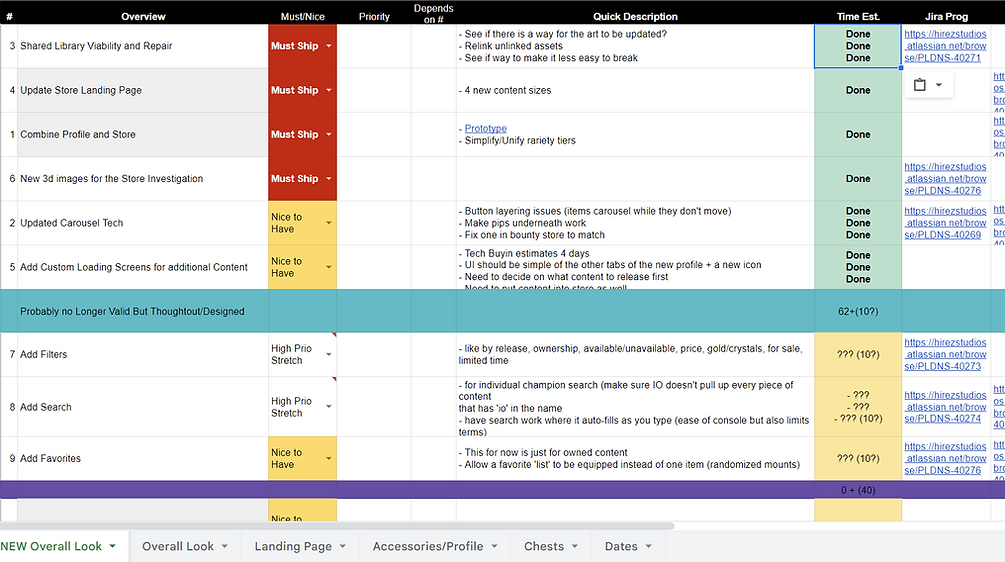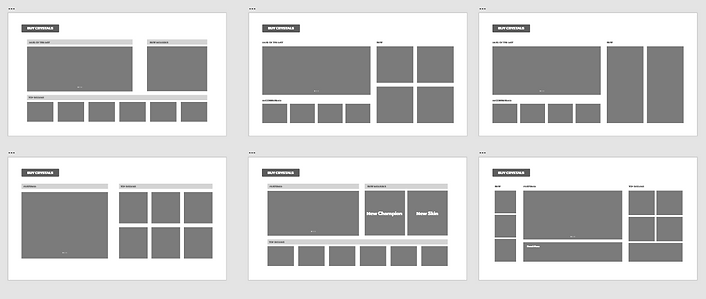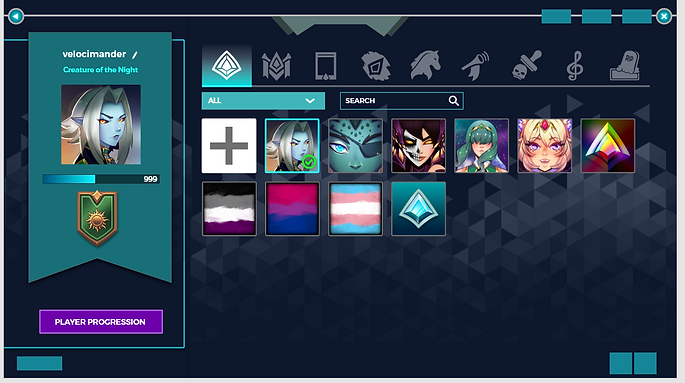Objective
An overdue upgrade to help the games health by making what a player owns easier to navigate while also giving marketing a dynamic landing page and players less clicks to purchase new items
My Role
Research
System Design
Stakeholder Pitches
Product Management
Dynamic Prototyping
Illustration
Unreal Implementation
Tools
Figma
Adobe XD
Illustrator
Photoshop
Unreal Engine
Team
Myself
UI Artist
UI Programmer
Duration
Started Feb 2023
Launched Jan 2024
The Challenge
Despite it being the revenue center of the game, the users experience of making a purchase in game was hidden and filled with friction points.
The game had never made the revenue numbers that stakeholders had hoped for. However the store was lacking in intuitive flow and ease of use.
Research and many meetings with how to proceed with our limited tech allowed me to create an extensive plan of how to update the store.
Confusion
It took 7 to 11 clicks for a player to find an item they could purchase within the store.

Tech Limitations
The game was built from a port of a port of a port so there were many systems like inventory management that needed extensive workarounds


Inflexibility
The landing page was very locked in and left little room for the marketing team to try new strategies beyond the type of content.
Result
Success rates increased in proportion to the number of individual inputs required to track a meal. Meals involving more than 10 ingredients increase unlikelyhood to track the meal by 43.2%
How might we reduce friction while increasing consumer confidence in their ability to find their purchases while encouraging more investment in the game?
The Solution
New Flow
When this update went live in Jan 2024 stakeholders were considering pulling all development from the game. Thanks to the new revenue this update provided, the game remained staffed until February 2025.
The update was also well received by the players which is uncommon when addressing such central out of game flows. It was a testament of how much players had adapted to an ineffective system rather than being perceived as an odd developer update

Old Flow

Key Features

The scariest and most imperative part of the changes was from the main menu. Players had already learned the flow of the game so any base changes added had to quickly ease them into recognizing why.
Easier access to their game history and inventory was indicated by my research so that was prioritized alongside adding an add button to encourage other investments in the game
Strengthening Inventory to Store
Management
Adding a flexible spot for the marketing team to share targeted items to the players. This also allowed new items to be easier to discover as the landing page would repopulate with different purchasable items. This had an added benefit of helping fix the gold economy within the game.
Dynamic Store Landing Page

Research and Planning
Survey Monkey, Answer Rocket, and Tableau
After each patch, myself and our Community manager would collaborate on asking strategic questions to help guide future development. With knowledge of these trends services like Tableau we were able to refine future system updates. Before the store overhaul we did an update on the event pass and took that feedback to help educate our decisions.

problems:
-
To many clicks to purchase and lack of flexibility of marketing
-
Revenue was in the red, and needed to get the game in the black to keep development going
pain points:
-
Ridgid backend systems involved with inventory systems
-
content images were limited to 256x256 due to years of lost of sourcefiles
-
The team was small consisting of: Myself, 1 UI artist and 1 UI programmer
Itemize each task and label it as Must Ship, High Priority, and Nice to have. Development was guaranteed to be dynamic so clear priorities was a necessity.
Set each item out strategically to make dynamic modifications to the plan manageable. With such a small team unpredictability is better to plan for than scramble to react to
Preplanning and making sure each task was properly T-shirt sized was needed along with weekly team syncs alongside earnest workload communication among the team
.png)
Screenshot of created plan in Google
Strategic restructuring of Skin Presetation
As we planned a hurdle appeared. Our largest inventory image was 315x256 which limited our design. Presenting avatars at 256x256 while presenting more expensive items at a fraction larger image would diminish the buying power of our cosmetics.
We decided it was worth the resources to replace every skin and mount image within the game to a 512x512 in game render, giving us more flexibility while also adding clarity of what a skin looked like in game and reducing the cost producing splashart for each skin.

Prototyping
System Flexibility, gray boxing, and Jira tracking
Since we were such a small team our prototyping was very simple. No flare, no branding, just pure focus on the UX flow. This expedited actionable progress as our preferred design approach ended up bloating our programmers work load. We ended
some early grayboxing
.png)

When designing a dynamic landing page we wanted to keep it as seamless as possible. We identified each type of cosmetic and assigned it to a specific size that would populate a 6 x 3 grid.
2 x 1
-
Titles
-
Announcer Packs
-
Music Packs
-
Weapons
1 x 1
-
Avatars
2 x 2
-
Mounts
-
Loading Frames
-
Death Stamps
2 x 3
-
Skins
Let Programming lead. By prioritizing code we were able to stratigically refocus to ensure ship date
Replacing over 12000 images was a large workload but that time gave us a stronger store
Prototype Learnings
Implemented the concept of T-shirt sizing. It made quick timeline adjustments and production clarity
Navigating Production
Not just a plan, but a strategy
Once the back end was properly tasked and estimated and the layout refined and iterated on I started setting up the systems in engine while my other UI/UX Designer focused on the art
Unfortunately Smite 2 production was prioritized by steakholders and I lost my art help 8 weeks before launch. It had a visual impact on the released product, but thanks to the planning during preproduction our now team of 2 were able to adjust.
A few High priority tasks were dropped, but those decisions were quick to make. Strictly shipping the MVP may hurt as a developer, but it is a part of live se development.
.png)
More finalized design
Results
New Flow
Not perfect, but on time
After a 6 month process no matter the state we had a hard ship date. While we had to pivot a ton, we did get every Must ship task done. At this point the stakeholders were talking about shutting down active development on Paladins. Thanks to the uptick in monetization coming from the new store that decision was delayed another 14 months.
Old Flow

